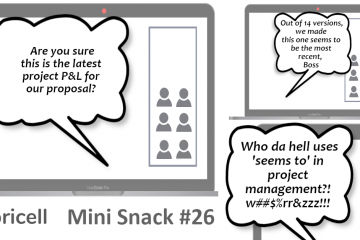
If you are a company providing services or projects for the market, for this discussion it does not matter if you propose staff augmentation or time and material or fixed-scope fixed-price engagements.
And for this discussion, we don't consider obvious things like wrong scoping or underestimations.
This is of course a major issue if we build our estimation for service or project with inaccurate assumptions.
But there are more sources of issues that may drive our engagements ending with poor margin.
Those cases are often stealthy and not so visible for organizations, but they can be fixed systematically to be eliminated.
Not Accurate Cost Rates
When referring to cost rates here, I mean cost rates to you as a supplier, not to your customer.
If we use contractors, it may be fairly easy to define them by just adding organizational uplift, as long as we know the uplift. Here there may be some issues as well, but we will not discuss them in this short post.
When our resources are employed, the cost rates are a reflection of fully loaded cost this is more complex.
What is a challenge for margin here?
If we use not accurate cost rates or wrong or wrongly converted.
Many companies don't calculate their cost rates based on the person but seniority level or just role. This already is an inaccuracy.
Using wrong cost rates is a matter of how we keep them updated in organizations. Do we have one system we manage cost rates? Or we send emails to everybody with change.
The last issue with cost rates is if we use different currencies. This is a quite big area for underestimating the cost. How do we make sure the conversion is done properly?
And we need to modify cost rates each time we need to update the calculation. Isn’t it costly?
Hidden Risk Buffer
The next area to discuss is a risk buffer.
Yes, it refers to fixed scope / fixed price mostly, but hey time and material are also applicable here.
The only real exclusion is staff augmentation engagements where we provide capacity.
If the calculations do not openly and transparently include risk buffer information, we can be sure, whatever was assumed as risk will be just consumed.
"Organizations using office tools to estimate the cost and price of their service are quite vulnerable to human errors.
Automation and standardization are the way to go "
This is a law of reality on projects and engagements.
I have never seen in my life that risk buffer not managed tightly was not consumed. I mean never.
The modern approach should always have a container for risk buffer and if the project is commercial, make sure it is treated as cost for marge calculation.
Human Mistakes
The last one is probably surprising, and no organization will admit easily this is an issue.
But if your project or service workload and cost estimations are built-in popular office tools there are almost given there are mistakes in calculations.
And I mean it. Even if a company uses protected templates, sooner or later those templates are bent and include local "improvements".
Those calculations are manually "improved "and via using the last version for next planning those improvements are spreading in organizations.
Manual corrections may be wrong formulas or a wrong range.
They do give wrong results on calculating cost and price for the service.
Final Conclusion
Organizations that use office tools to build their estimations are quite vulnerable to those errors.
Don’t get me wrong, the spreadsheet is great and flexible. Everybody has it and knowhow to use it.
But those flexibility is an enemy for a solid accurate approach to calculate project or service cost price, as it introduces errors.
In the early 20s of the 21st Century calculating project, costs, and prices in a spreadsheet, the same way as in the '90s, is obsolete. Time to transform to a modern platform like Pricell.io. dedicated to professional services.


